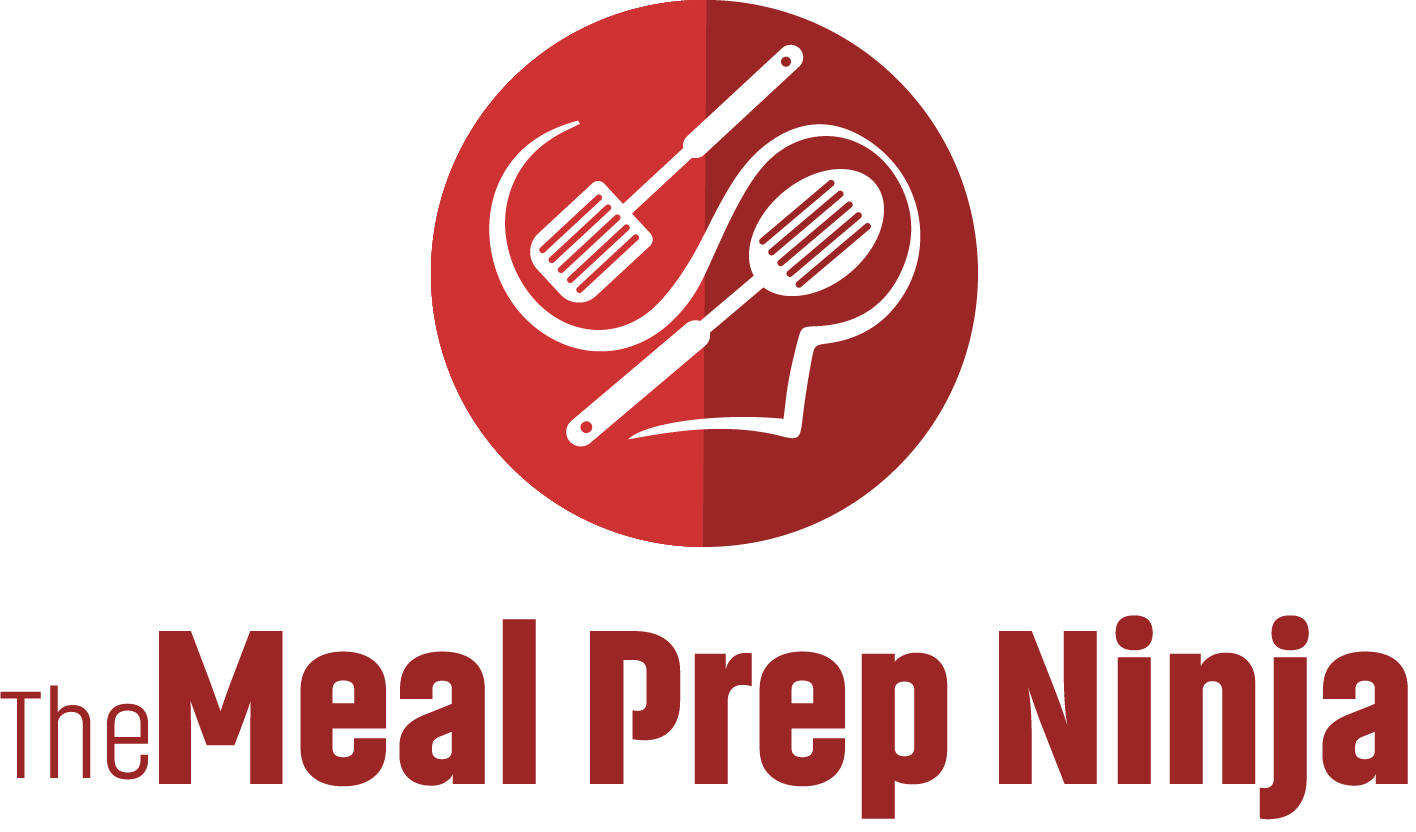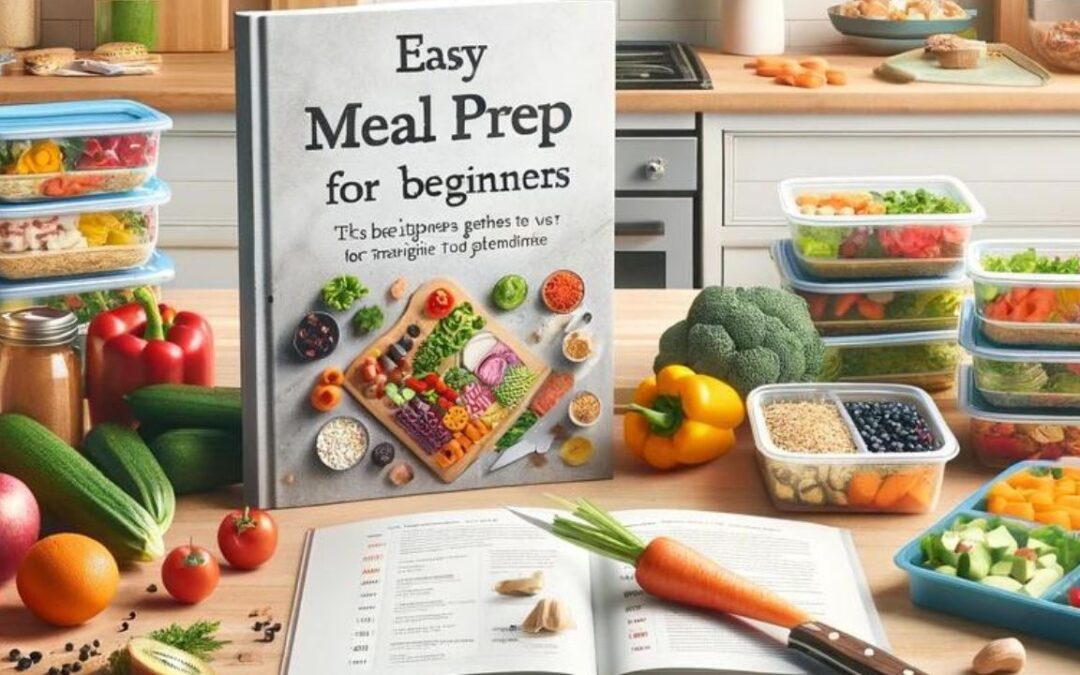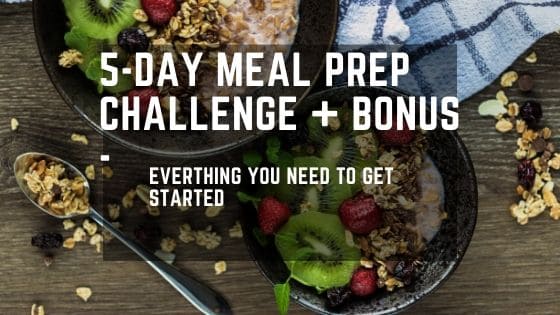Last Updated on February 19, 2024 by TheMealPrepNinja
Welcome to the world of meal prepping! Whether you’re a busy professional, a student, or simply looking to eat healthier, meal prep can be a game-changer when it comes to saving time and making nutritious meals.
But where do you start?
How can you navigate the world of meal prepping and create delicious, beginner-friendly meals without feeling overwhelmed? Let’s dive in and discover some easy meal prep ideas and quick tips to get you started on your meal prep journey.
This post may contain affiliate links, which means we may receive a commission, at no extra cost to you, if you purchase through a link.
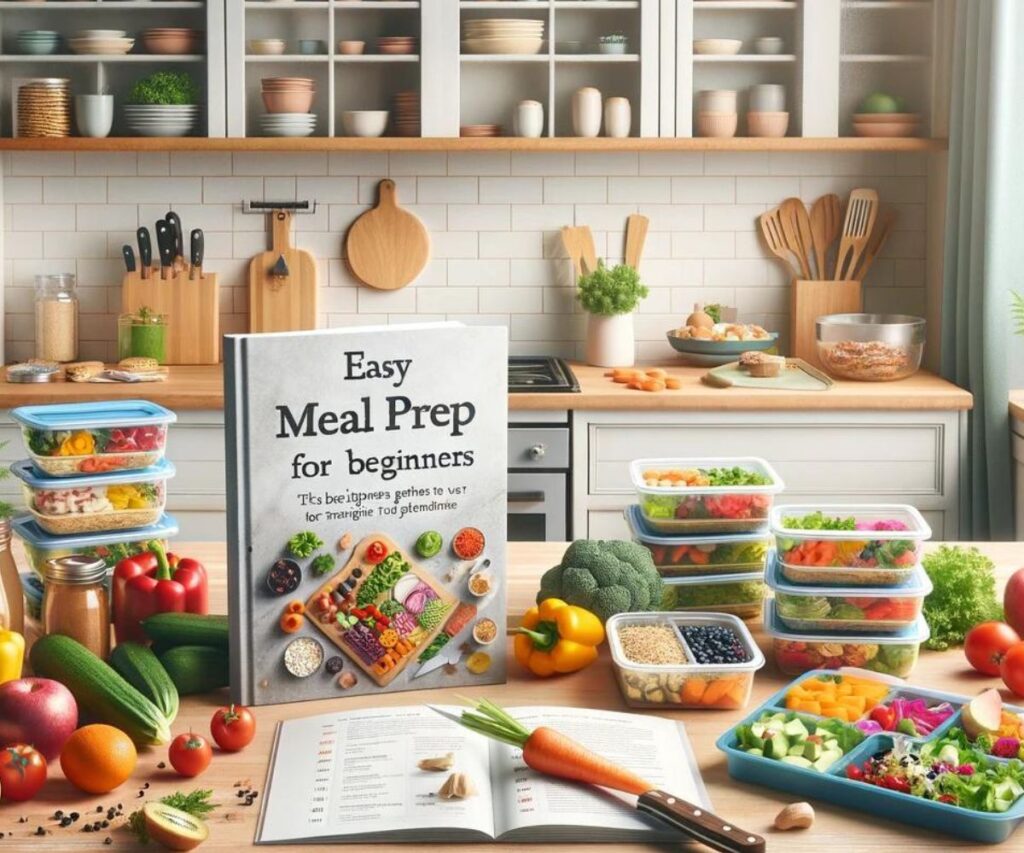
Key Takeaways:
- Meal prep can be a time-saving and convenient way to eat healthier.
- Beginner-friendly cooking is all about simplicity and planning.
- Creating simple grocery lists is key to efficient meal prep.
- With the right tips and guidance, anyone can succeed in meal prepping.
- Get ready to embrace the benefits of meal prep and experience the joy of delicious, homemade meals.
Understanding the Basics of Meal Prepping
Meal prepping is a popular practice that involves preparing and portioning meals in advance to save time and simplify weekday cooking. By dedicating a few hours to meal prepping, you can set yourself up for success throughout the week and enjoy the benefits it offers.
In this section, we will explore the definition of meal prep, and its numerous benefits, and debunk common myths surrounding this time-saving cooking technique.
Defining Meal Prep and Its Benefits
Meal prep, also known as meal prepping, is the process of planning, preparing, and packaging meals in advance. It typically involves cooking multiple servings of protein, grains, vegetables, and sauces, which are then portioned out into individual containers. These pre-portioned meals can be stored in the refrigerator or freezer, ready to be reheated and enjoyed throughout the week.
There are several benefits to incorporating meal prep into your routine:
- Time-saving: By investing a few hours in meal prepping, you can save significant time during the week. Having pre-cooked meals ready to go means less time spent on daily meal preparation and more time for other activities.
- Cost-effective: Meal prepping can help you save money by eliminating the need for takeout or dining out. By planning and preparing your meals in advance, you can also make the most of ingredients, reducing food waste.
- Healthier eating: With meal prep, you have better control over your portion sizes and ingredients, making it easier to maintain a balanced diet. By preparing your meals at home, you can reduce your intake of processed foods and customize recipes to suit your nutritional needs.
- Reduced stress: Having healthy meals readily available can help alleviate the stress of coming up with meal ideas for each day. Meal prepping eliminates last-minute decision-making, ensuring that you have nourishing meals on hand.
By embracing meal prep, you can enjoy these benefits and make positive changes to your daily routine.
Common Meal Prepping Myths Debunked
Despite the numerous benefits, meal prepping is sometimes met with skepticism and myths. Let’s debunk some of the common misconceptions surrounding meal prep:
- Myth: Meal prepping is time-consuming.
Fact: While meal prepping does require a dedicated block of time, it ultimately saves time during the week. By investing a few hours upfront, you can avoid spending time on daily meal preparation and enjoy the convenience of ready-to-eat meals. - Myth: Meal prepping leads to boring meals.
Fact: Meal prepping allows for creativity in the kitchen. You can experiment with a variety of ingredients, flavors, and cuisines to keep your meals exciting and diverse throughout the week. - Myth: Meal prepping is only for fitness enthusiasts.
Fact: Meal prepping is suitable for individuals of all lifestyles, not just fitness enthusiasts. Whether you’re a busy professional, a student, or someone looking to simplify their cooking routine, meal prep can be beneficial for anyone seeking time-saving and nutritious meals.
Now that we’ve debunked these myths, it’s time to dive deeper into the practical aspects of meal prepping and discover how to create your first meal plan. But before we do that, let’s take a moment to visualize the profound impact of meal prep by looking at a snapshot of real-life benefits reported by meal prep enthusiasts:
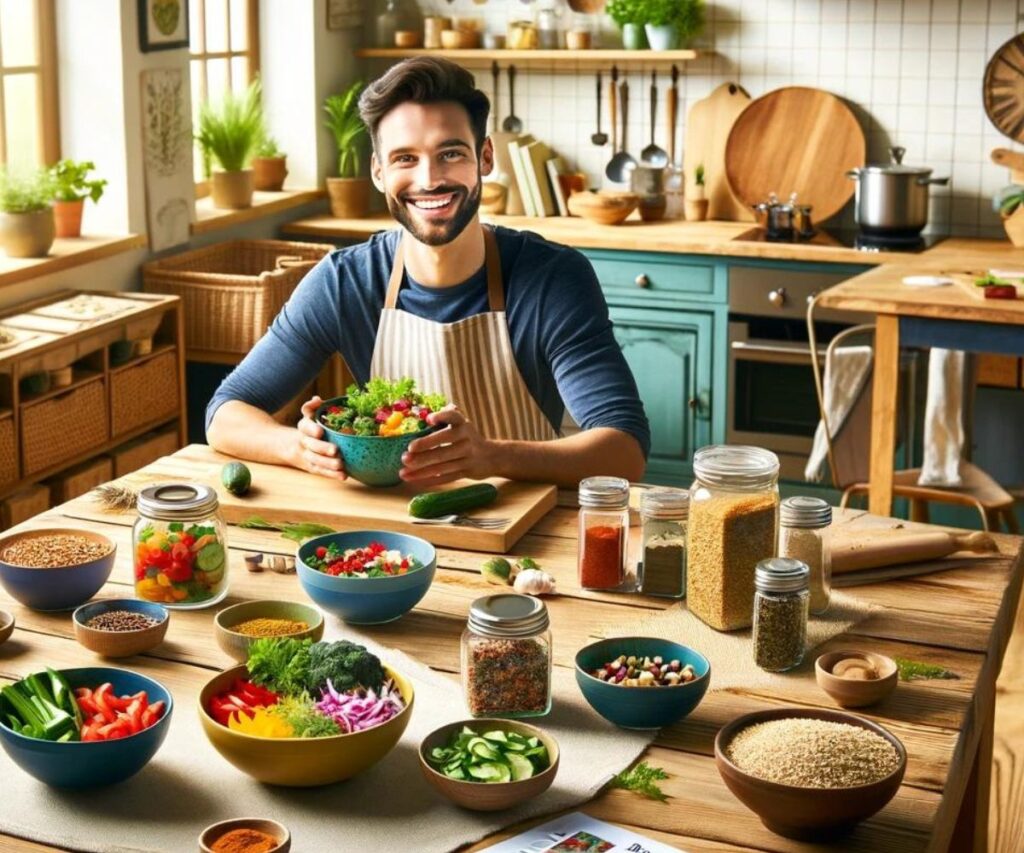
Creating Your First Meal Plan
Now that you understand the basics of meal prepping, it’s time to create your very first meal plan. A meal plan helps you stay organized and ensures you have all the necessary ingredients for your meals throughout the week. Here’s a step-by-step guide to get you started:
Choosing Recipes for Your Meal Plan
When selecting recipes for your meal plan, prioritize meals that are beginner-friendly and require simple ingredients and cooking techniques. Look for recipes that can easily be divided into portions and stored for later use. Consider the following tips:
- Include a mix of breakfasts, lunches, dinners, and snacks to cover all your meals throughout the week.
- Pick recipes that use similar ingredients to minimize waste and make grocery shopping more efficient.
- Opt for recipes that are suitable for reheating or can be enjoyed cold, depending on your preferences.
- Experiment with different cuisines and flavors to keep your meal plan exciting and enjoyable.
3 Easy Meal Mrep Recipes to Start With
Healthy Slow Cooker Chicken Parmesan Meal Prep
Boneless Chicken Thighs In Air Fryer
Yoshinoya Copycat Recipe Meal Prep
Implementing a Grocery Shopping Strategy
Once you have chosen your recipes, it’s time to create a grocery shopping strategy to ensure you have everything you need. Follow these tips to streamline your shopping process:
- Make a detailed grocery list based on the ingredients required for your chosen recipes.
- Organize your list by sections such as produce, pantry staples, meats, and dairy to make your shopping trip more efficient.
- Take inventory of your kitchen to avoid purchasing items you already have.
- Consider using a grocery delivery service or online shopping to save time and minimize impulse purchases.
Remember, having a well-planned grocery list not only ensures you have everything you need for your meal plan but also helps you stick to your budget.
By following these steps, you’ll be well on your way to creating a successful meal plan that fits your needs and preferences. Next, we’ll explore the essential tools and items you should have in your kitchen to facilitate meal prep.

Stocking Your Kitchen: Essentials for Starters
When it comes to meal prep, having the right tools and essentials in your kitchen can make all the difference. Here are some kitchen essentials that every beginner should have to facilitate meal prep and ensure a smooth cooking experience:
| Item | Image | Description |
|---|---|---|
| Cutting Board | Choose a durable cutting board that provides a stable surface for prepping ingredients. Opt for materials like bamboo or plastic that are easy to clean and maintain. | |
| Knives | Invest in a good set of knives, including a chef’s knife, utility knife, and paring knife. Sharp and high-quality knives will make chopping and slicing ingredients a breeze. | |
| Food Storage Containers | Choose a variety of food storage containers, including different sizes and shapes, to store your prepped ingredients and meals. Look for BPA-free containers with secure lids to keep your food fresh. | |
| Measuring Cups and Spoons | Accurate measurements are crucial for successful meal prep. Have a set of measuring cups and spoons on hand to ensure accurate portion sizes and consistent flavors in your meals. | |
| Mixing Bowls | Choose a set of mixing bowls in different sizes to mix ingredients, marinate meat, and toss salads. Stainless steel or glass bowls are ideal as they are easy to clean and do not retain odors. |
In addition to these essentials, there are other kitchen gadgets and tools that can simplify the meal prep process. Some examples include:
- Slow cooker or Instant Pot for easy one-pot meals
- Blender or food processor for making sauces, dressings, and smoothies
- Vegetable peeler and spiralizer for prepping vegetables
- Grater for shredding cheese or vegetables
- Measuring scale for precise ingredient measurements
By stocking your kitchen with these essentials and tools, you’ll be well-equipped to tackle any meal prep recipe and make the most of your cooking experience.
Simple Grocery Lists That Save Time and Money
Creating efficient grocery lists is essential for successful meal prepping. By planning ahead and organizing your shopping list, you can save both time and money. Here are some tips to help you make the most of your grocery lists:
How to Make Efficient Grocery Lists
- Plan your meals: Before making your grocery list, take some time to plan out your meals for the week. This will give you a clear idea of what ingredients to include on your list.
- Take inventory: Check your pantry, refrigerator, and freezer to see what items you already have. Make note of any ingredients you don’t need to buy to avoid unnecessary purchases.
- Stick to the essentials: Focus on buying staple items that can be used in multiple dishes. This will help you minimize waste and maximize the use of your ingredients.
- Organize your list: Arrange your grocery list based on the layout of your favorite grocery store. This way, you can easily navigate through the aisles and save time.
- Use digital tools: Take advantage of smartphone apps or online grocery shopping platforms that allow you to create and save grocery lists. These tools can help you stay organized and save time.
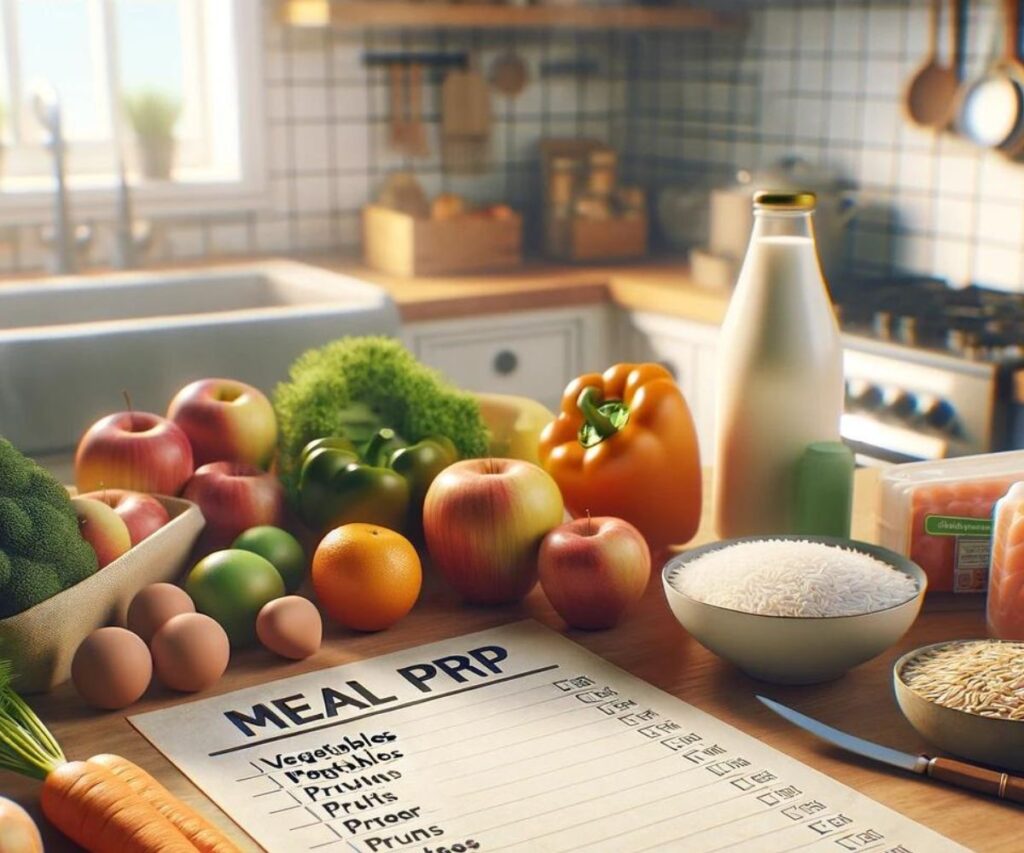
Budgeting for Your Meal Prep
Meal prepping on a budget doesn’t have to be difficult. With some strategic planning and smart purchasing decisions, you can enjoy delicious and affordable meals. Here’s how to budget for your meal prep:
- Set a budget: Determine how much you’re willing to spend on groceries each week. This will help you make more conscious choices and prioritize your purchases.
- Shop sales and discounts: Keep an eye out for sales, discounts, and coupons. Stock up on non-perishable items when they are on sale to save money in the long run.
- Buy in bulk: Consider buying staple ingredients in bulk. This can often be more cost-effective, especially for items like rice, pasta, and canned goods.
- Opt for seasonal produce: Seasonal fruits and vegetables are usually more affordable and taste better. Incorporate them into your meal prep to add variety and save money.
- Avoid processed foods: Processed and pre-packaged foods can be more expensive. Try to stick to whole, fresh ingredients that you can prepare and portion yourself.
By following these tips, you can create efficient grocery lists that align with your meal prep goals and budget. Remember, planning and being mindful of your purchases will help you save time and money on your meal-prepping journey.
Quick Meal Prep Techniques to Minimize Cooking Time
To make meal prepping as efficient as possible, it’s important to learn some time-saving cooking techniques and utilize handy kitchen gadgets. By implementing these strategies, you’ll be able to streamline your meal prep process and spend less time in the kitchen.
Time-Saving Cooking Tips and Tricks
Here are some valuable tips to help you save time while preparing your meal preps:
- Batch Cooking: Prepare large quantities of staple ingredients such as grains, proteins, and veggies all at once. This allows you to assemble meals quickly throughout the week.
- One-Pot Meals: Opt for recipes that can be cooked in a single pot or pan. This reduces the number of dishes you’ll need to clean and saves time on meal prep.
- Pre-Chopping Ingredients: Spend some time pre-chopping ingredients, such as onions, garlic, and vegetables, and store them in containers or resealable bags. This way, they’ll be ready to use when you need them.
- Use Pre-Made Sauces and Dressings: To save time on meal prep, consider using pre-made sauces and dressings. They add flavor to your dishes without requiring extra time and effort to prepare them from scratch.
- Invest in a Slow Cooker or Instant Pot: These kitchen gadgets are a game-changer for busy individuals. Simply toss your ingredients into the appliance, set the timer, and let it do the cooking for you.
Using Kitchen Gadgets for Faster Preparation
Kitchen gadgets and tools can significantly speed up the meal prep process. Here are some essential gadgets to consider:
- Mandoline Slicer: A mandoline slicer helps you quickly and uniformly slice fruits and vegetables, saving you time and effort.
- Food Processor: This versatile appliance can chop, shred, puree, and blend ingredients in seconds, making meal prep a breeze.
- Immersion Blender: An immersion blender is perfect for quickly blending soups, sauces, and smoothies without the need for transferring to a traditional blender.
- Instant Thermometer: Ensure your proteins are cooked to the perfect temperature with an instant-read thermometer. This eliminates the guesswork and reduces the risk of overcooking.
- Vegetable Spiralizer: Transforming vegetables into noodles has never been easier with a spiralizer. It’s a quick and fun way to add variety to your meals.
| Kitchen Gadgets | Benefits | |
|---|---|---|
| Save Time | Effortless Preparation | |
| Mandoline Slicer | ✔ | |
| Food Processor | ✔ | ✔ |
| Immersion Blender | ✔ | ✔ |
| Instant Thermometer | ✔ | |
| Vegetable Spiralizer | ✔ | |
Easy Meal Prep Ideas for Beginners
Are you new to meal prep and looking for beginner-friendly recipes that are quick and easy to make? Look no further! I’ve got you covered with some delicious meal prep ideas that will save you time and ensure you have nutritious meals ready to go throughout the week.
When it comes to meal prep, simplicity and convenience are key. These recipes require minimal ingredients and can be easily customized to suit your taste preferences. Whether you’re prepping breakfasts, lunches, dinners, or snacks, these ideas will make your meal prep journey a breeze.
“Meal prep doesn’t have to be complicated or overwhelming. With a little planning and some easy recipes, you’ll be well on your way to enjoying healthy, homemade meals without the stress.”
-Emily Johnson, Certified Nutritionist
Here are a few beginner-friendly meal prep ideas to inspire you:
Sheet Pan Chicken and Vegetables:
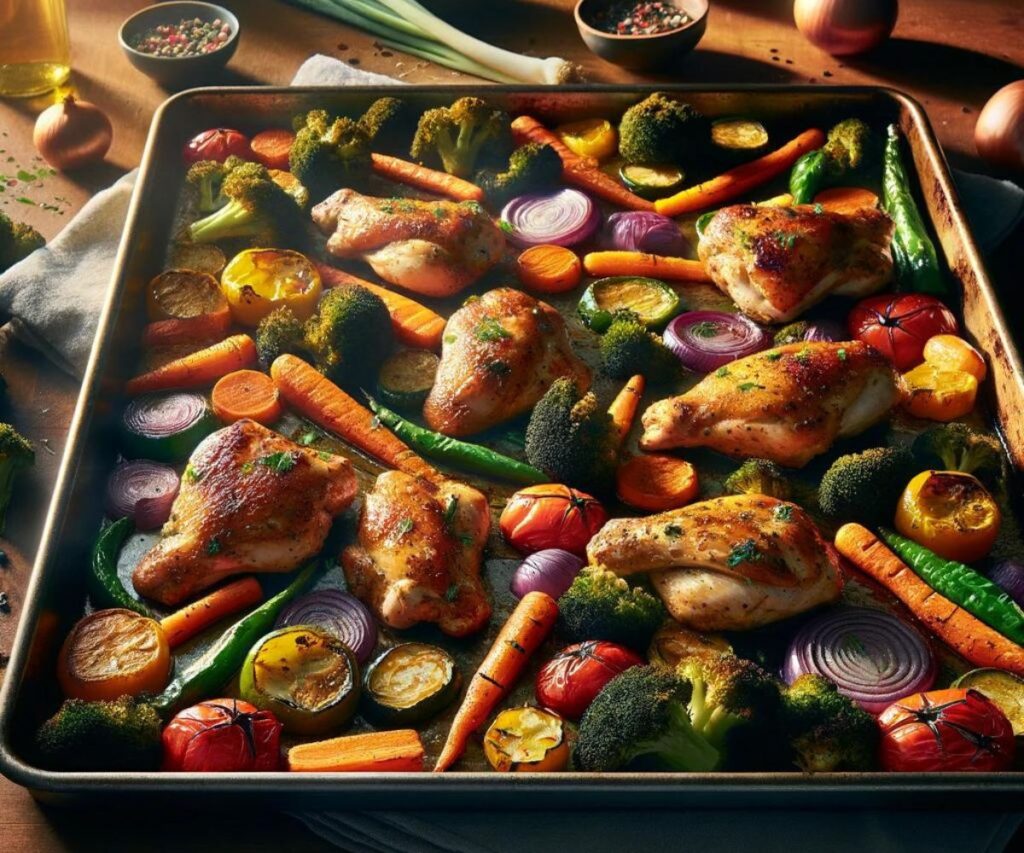
Prepare a large sheet pan of seasoned chicken breasts and a variety of colorful vegetables. Serve with quinoa or brown rice for a complete meal.
Ingredients: – 4 boneless, skinless chicken breasts
– 1 lb baby potatoes, halved
– 1 bell pepper, sliced
– 1 zucchini, sliced
– 1 red onion, sliced
– 2 tbsp olive oil
– 2 tsp garlic powder
– 1 tsp paprika
– Salt and pepper to taste
Instructions:
1. Preheat oven to 400°F (200°C).
2. Place chicken breasts in the center of a sheet pan.
3. Surround the chicken with halved baby potatoes, sliced bell pepper, zucchini, and red onion.
4. Drizzle olive oil over everything and sprinkle with garlic powder, paprika, salt, and pepper.
5. Toss everything together to coat evenly.
6. Bake in the preheated oven for 25-30 minutes or until chicken is cooked through and vegetables are tender.
7. Serve hot and enjoy!
Mason Jar Salads:

Layer your favorite salad ingredients in mason jars for a grab-and-go lunch option. Start with dressing at the bottom, followed by hearty toppings, and finish with leafy greens.
Ingredients:
- Mixed greens
- Cherry tomatoes
- Cucumbers
- Red onion
- Feta cheese
- Balsamic vinaigrette dressing
- Favorite protein
Instructions:
- Start by layering the ingredients in a mason jar starting with the dressing at the bottom.
- Add cherry tomatoes, cucumbers, red onion, and feta cheese on top of the dressing.
- Fill the rest of the jar with mixed greens, making sure to pack it down tightly.
- Seal the jar and store in the refrigerator until ready to eat.
- When ready to enjoy, shake the jar to mix everything together and pour into a bowl or eat directly from the jar. Enjoy your Mason Jar Salad!
Overnight Oats:
In a jar or container, combine oats, milk (or your preferred plant-based milk), chia seeds, and your choice of sweeteners and toppings. Refrigerate overnight for a delicious and filling breakfast.
Ingredients:
- 1/2 cup rolled oats
- 1/2 cup milk (or non-dairy alternative)
- 1 tablespoon chia seeds
- 1 tablespoon honey or maple syrup
- Optional toppings: sliced fruits, nuts, or yogurt
Instructions:
- In a jar or bowl, mix together oats, milk, chia seeds, and honey/maple syrup.
- Cover and refrigerate overnight.
- In the morning, stir well and add desired toppings before serving. Enjoy cold!
Chicken Stir-Fry Freezer Packs:
Chop chicken breast, bell peppers, broccoli, and other veggies of your choice. Divide into individual freezer bags and freeze. When ready to cook, simply stir-fry with your favorite sauce and serve over rice or noodles.
Ingredients:
- 1 lb chicken breast, sliced
- 2 cups mixed vegetables (such as bell peppers, broccoli, carrots)
- 1/4 cup soy sauce
- 2 cloves garlic, minced
- 1 tsp ginger, minced
Instructions:
- In a large bowl, mix together the sliced chicken, mixed vegetables, soy sauce, garlic, and ginger.
- Divide the mixture into individual freezer-safe bags.
- Seal the bags tightly and freeze for up to 3 months.
- To cook, simply heat a skillet over medium-high heat and add the frozen stir-fry pack.
- Cook for 10-15 minutes or until the chicken is cooked through and the vegetables are tender.
- Serve hot over rice or noodles. Enjoy!
These recipes are just a starting point, and the possibilities are endless. Feel free to experiment with different ingredients, flavors, and cooking methods to keep your meal prep exciting and varied.
| Recipe | Prep Time | Cook Time |
|---|---|---|
| Sheet Pan Chicken and Vegetables | 15 minutes | 25 minutes |
| Mason Jar Salads | 10 minutes | – |
| Overnight Oats | 5 minutes | – |
| Chicken Stir-Fry Freezer Packs | 20 minutes | 10 minutes (when cooking) |
So don’t be intimidated by the idea of meal prep. With these easy meal prep ideas, you’ll save time, eat healthier, and enjoy delicious homemade meals every day. Start your meal prep journey today and reap the rewards of a well-planned and organized kitchen!
Weekday Meal Planning: A Day-by-Day Guide
In this section, I will provide you with a comprehensive day-by-day guide to help you plan and prepare your meals for the weekdays. By following this flexible meal prep schedule and implementing batch cooking strategies, you’ll be able to save time and enjoy delicious, nutritious meals throughout the week.
Designing a Flexible Meal Prep Schedule
When it comes to weekday meal planning, flexibility is key. Life can be unpredictable, so it’s important to create a schedule that works for you and allows for adjustments. Here are some tips for designing a flexible meal prep schedule:
- Choose a set day for meal prepping: Pick a day that works best for you to set aside time for meal prep. Ideally, this should be a day when you have a few hours free to focus on cooking and preparing your meals.
- Plan meals based on your schedule: Take into consideration your daily activities and commitments when planning your meals. If you know you have a busy day coming up, opt for quick and easy recipes. On days when you have more time, you can try more elaborate dishes.
- Consider overlapping ingredients: To make meal prep efficient, look for recipes that use similar ingredients. This way, you can prepare multiple meals at once and save time and effort in the kitchen.
- Allow for flexibility: Leave some room for spontaneity in your meal plan. While it’s great to have a schedule, it’s also important to have the freedom to adjust and swap meals based on your cravings or any unforeseen circumstances.
Batch Cooking Strategies for the Week
Batch cooking is a game-changer when it comes to weekday meal planning. By preparing larger quantities of certain dishes, you can save time and have ready-made meals for multiple days. Here are some batch-cooking strategies to consider:
- Cook in bulk: When you’re preparing meals, double or triple the recipe so that you have leftovers for future meals. Foods like soups, casseroles, and stews are great options for batch cooking.
- Use versatile ingredients: Opt for ingredients that can be used in multiple dishes throughout the week. For example, roasted chicken can be used in salads, wraps, or sandwiches.
- Freeze individual portions: If you have limited fridge space, freeze individual portions of your batch-cooked meals. This way, you can easily defrost and enjoy them whenever you need a quick meal.
- Prep ingredients in advance: Cut up vegetables, marinate meats, or pre-cook grains in advance to streamline the cooking process during the week. This will save you time and make meal assembly a breeze.
By implementing a flexible meal prep schedule and utilizing batch cooking techniques, you’ll be able to make weekday meal planning a breeze. You’ll have delicious, nutritious meals ready to go, allowing you to focus on other priorities while still prioritizing your health and well-being.
Now that you have a day-by-day guide and strategies for weekday meal planning, it’s time to put them into action. Get started and enjoy the benefits of efficient meal prep!
Nutritional Meal Guides for Balanced Eating
As a certified nutrition coach it is imperative to Incorporate balanced and nutritious meals into your meal prep routine is key to maintaining a healthy diet. Not only will it provide you with the necessary energy and nutrients, but it will also support your overall well-being. Here are some essential tips and ideas to create nutritional meal guides for balanced eating:
1. Include a variety of fruits and vegetables: Aim to incorporate a variety of colorful fruits and vegetables into your meals. They are rich in vitamins, minerals, and antioxidants that support your immune system and promote optimal health.
2. Prioritize lean proteins: Choose lean protein sources such as chicken breast, turkey, fish, tofu, or legumes to provide your body with essential amino acids for muscle growth and repair.
3. Opt for whole grains: Instead of refined grains, choose whole grains like quinoa, brown rice, or whole wheat bread. Whole grains are rich in fiber and provide sustained energy throughout the day.
4. Don’t forget healthy fats: Include sources of healthy fats like avocados, nuts, and olive oil in your meals. These fats are important for brain function, hormone production, and nutrient absorption.
5. Balance your macronutrients: Aim to include a balance of carbohydrates, proteins, and fats in your meals. This will provide you with the energy and nutrients your body needs to function properly.
6. Watch your portion sizes: Pay attention to portion sizes to ensure you’re not overeating or consuming excessive calories. Use measuring cups or a food scale to accurately portion out your meals.
7. Stay hydrated: Don’t forget the importance of staying hydrated. Drink plenty of water throughout the day to support digestion, nutrient absorption, and overall health.
By following these guidelines and incorporating a variety of nutritious ingredients into your meal prep, you can create balanced and healthy meals that nourish your body and support your fitness goals.
For more inspiration, here’s a visual representation of a balanced meal prep guide:
| Meal Component | Examples |
|---|---|
| Proteins | Grilled chicken breast, baked salmon, tofu |
| Vegetables | Steamed broccoli, roasted carrots, mixed salad |
| Complex Carbohydrates | Quinoa, sweet potatoes, whole wheat pasta |
| Healthy Fats | Avocado slices, nuts, olive oil |
| Snacks | Greek yogurt, fruit, protein bars |
| Stay Hydrated | Water, herbal tea, infused water |
Remember, meal prep is not only about convenience but also about fueling your body with nutritious and balanced meals. With these guidelines and ideas, you can create meal plans that support your overall health and well-being.
Food Safety and Storage for Meal Prep
When it comes to meal prepping, ensuring food safety and proper storage is essential. By following these guidelines, you can maintain the quality and freshness of your prepared meals while minimizing the risk of foodborne illnesses. I am no food safety expert but I do follow guidelines from the FDA and foodsafety.gov.
1. Cooked Meal Storage:
After preparing your meals, it’s important to store them properly to keep them safe to consume. Here are a few tips:
- Allow the meals to cool down before refrigerating or freezing them.
- Divide the meals into individual portions in airtight containers.
- Label the containers with the meal name and date of preparation to keep track of freshness.
- Refrigerate meals that will be consumed within the next 3-4 days.
- Freeze meals if you’re planning to consume them beyond 4 days. Make sure the freezer temperature is set to 0°F or below.
2. Tips for Preventing Foodborne Illnesses:
Food safety is crucial in meal prep to avoid any potential health risks. Consider the following:
- Thoroughly wash your hands before handling any ingredients or preparing meals.
- Ensure all utensils, cutting boards, and countertops are clean and sanitized.
- Separate raw and cooked ingredients to prevent cross-contamination.
- Cook proteins to their recommended internal temperatures using a food thermometer.
- Avoid leaving perishable foods at room temperature for extended periods.
3. Maximizing Shelf Life:
To make the most of your meal prep storage, keep these tips in mind:
- Rotate your stored meals, consuming the oldest ones first.
- Regularly check the freshness of frozen meals and discard any that have been frozen for too long.
- If you plan to reheat and consume frozen meals, defrost them overnight in the refrigerator or use the defrost function on your microwave.
By prioritizing food safety and proper storage techniques, you can enjoy the convenience and benefits of meal prepping while ensuring the safety and quality of your meals.
Adapting Meal Prep for Various Dietary Preferences
When it comes to meal prep, catering to different dietary preferences and restrictions is essential. Whether you follow a vegetarian, vegan, gluten-free, or require a protein-rich diet, there are plenty of options to suit your needs. Adapting your meal prep to these dietary preferences ensures that you can still enjoy delicious, nutritious, and well-rounded meals.
If you have chosen a vegetarian or vegan lifestyle, incorporating plant-based ingredients into your meal prep is a must. Vegetarian meal prep often involves creating protein-rich recipes using beans, lentils, tofu, or tempeh. These ingredients can be combined with a variety of vegetables, grains, and herbs to create flavorful and filling dishes.
For those following a gluten-free diet, meal prep can be equally enjoyable and inclusive. Opt for gluten-free grains like quinoa or rice as a base for your meals. Incorporate plenty of fruits, vegetables, and lean proteins to ensure a well-balanced and satisfying meal. Experimenting with different herbs, spices, and sauces can add depth and flavor to your gluten-free meal prep.
“Meal prep provides an opportunity to explore diverse flavors and ingredients while staying true to your dietary preferences.”
If your goal is to consume a protein-rich diet, meal prep offers a convenient way to ensure you’re meeting your nutritional needs. Include lean meats like chicken, turkey, or fish in your meal prepped dishes. Additionally, incorporate protein-packed plant-based options like chickpeas, quinoa, or Greek yogurt to vary your protein sources. Balancing your protein intake with a variety of vegetables and whole grains will provide a well-rounded meal plan.
For individuals with special dietary requirements or restrictions, meal prep can still be enjoyable and accommodating. Whether you’re following a low-sodium, low-fat, or a specific diet for medical reasons, there are numerous meal prep recipes and resources available. Be sure to consult with a healthcare provider or a registered dietitian to ensure your meal plan aligns with your specific needs.
With a little creativity and planning, meal prep can be adapted to suit a wide range of dietary preferences and restrictions. By incorporating diverse ingredients, experimenting with flavors, and following expert advice, you’ll be able to enjoy delicious and nutritious meals that cater to your unique needs.
Conclusion
In conclusion, meal prep is a fantastic tool for beginners looking to simplify and improve their cooking routine. By dedicating a little time upfront to plan and prepare meals in advance, you can save valuable time and energy throughout the week.
Throughout this article, we have explored the basics of meal prepping, debunked common myths, and provided practical tips to help you get started. Remember, meal prep is not about sacrificing taste or variety – it’s about optimizing your time in the kitchen and enjoying nutritious and delicious meals.
As you embark on your meal prep journey, I encourage you to continue exploring and experimenting with different recipes, flavors, and techniques. Feel free to adapt the meal plans and grocery lists to suit your preferences and dietary needs. Whether you’re a busy professional, a student, or a parent managing multiple schedules, meal prep can make your life easier and healthier.
So, why wait? Start implementing the tips and strategies you’ve learned here and experience the benefits of meal prep firsthand. Get organized, save time, and most importantly, nourish your body with wholesome meals throughout the week. Happy prepping!
FAQ
What is meal prep?
Meal prep involves planning, preparing, and packaging meals in advance, often for the entire week. It helps save time, money, and effort by reducing the need for daily cooking and decision-making.
What are the benefits of meal prep?
Meal prepping offers several benefits, including saving time, promoting healthier eating habits, reducing food waste, and helping with weight management. It also allows for better portion control and can help stick to dietary goals.
What are some common myths about meal prepping?
There are a few myths surrounding meal prep, such as it being time-consuming, boring, or only suitable for people with strict diet plans. In reality, meal prep can be adapted to suit different preferences, schedules, and dietary needs.
How can I create my first meal plan?
To create a meal plan, start by choosing recipes that are suitable for meal prep and align with your dietary preferences. Consider the number of meals and snacks you need for the week, and make a list of the ingredients required for each recipe.
How do I choose recipes for my meal plan?
When selecting recipes for your meal plan, consider your cooking abilities, available time, and personal preferences. Look for recipes that are simple, require minimal ingredients, and can be made in large batches for easy reheating throughout the week.
How can I implement a grocery shopping strategy for meal prep?
To implement a grocery shopping strategy for meal prep, create a list of all the ingredients you need for your planned recipes, taking note of quantities. Try to stick to this list when visiting the grocery store to avoid impulse buys.
What kitchen essentials should beginners have for meal prep?
Beginners should have basic kitchen essentials such as food storage containers, cutting boards, knives, measuring cups, and cooking utensils. These tools will help with meal prep organization and efficient food preparation.
How can I make efficient grocery lists for meal prep?
To make efficient grocery lists, review your meal plan and make a list of the ingredients you need. Group similar items together and consider any pantry staples you may already have. This will help you shop more efficiently and avoid unnecessary purchases.
How can I budget for my meal prep?
To budget for meal prep, plan your meals around affordable ingredients and sales, buy in bulk when possible, and make use of leftovers. Consider meal prepping ingredients that are versatile and can be used in multiple recipes.
What are some time-saving cooking tips for meal prep?
Time-saving cooking tips for meal prep include using one-pot recipes, prepping ingredients in bulk, and making use of your slow cooker or Instant Pot. Additionally, consider chopping vegetables ahead of time and using frozen or pre-cut ingredients to save time.
What kitchen gadgets can help with meal prep?
Kitchen gadgets such as a food processor, blender, or mandoline slicer can help with chopping, slicing, and blending ingredients quickly. Additionally, investing in a good set of food storage containers with compartments can simplify portioning and storage.
What are some easy meal prep ideas for beginners?
Beginners can start with simple meal prep ideas such as overnight oats, salads in jars, sheet pan meals, and stir-fries. These meals can be made in advance, stored in the refrigerator or freezer, and easily reheated when needed.
How can I design a flexible meal prep schedule for the weekdays?
To design a flexible meal prep schedule for weekdays, start by planning your meals and taking into account your work schedule and daily commitments. Choose recipes that can be made in advance and consider batch cooking to have meals ready for the entire week.
Can meal prep be adapted to different dietary preferences?
Absolutely! Meal prep can be adapted to accommodate various dietary preferences, such as vegetarian, vegan, gluten-free, or protein-rich diets. There are numerous recipe options available to suit individual needs and goals.
How can I ensure food safety and proper storage for meal prep?
To ensure food safety, it’s important to store cooked meals in airtight containers in the refrigerator for a recommended timeframe. You can also freeze meals for longer storage. Proper labeling and rotation of meals will help maintain freshness and prevent foodborne illnesses.
Are there meal prep options for special dietary needs?
Yes, meal prepping can be adapted to meet specific dietary needs such as vegetarian, vegan, gluten-free, or protein-rich diets. There are plenty of recipes and resources available for these dietary preferences.
Source Links
- https://thegirlonbloor.com/7-easy-ways-to-meal-prep-for-beginners/
- https://www.everydayhealth.com/diet-nutrition/meal-prep-tips-every-beginner-should-know/
- https://www.budgetbytes.com/meal-prep-101-a-beginners-guide/

Jim Lopez, the founder and editor of The Meal Prep Ninja, shares his journey from a passionate bodybuilder and fitness enthusiast to a certified nutrition coach. Certified by Precision Nutrition, Jim aims to empower others with knowledge on meal prep and nutrition, offering resources for busy individuals to enjoy low-calorie, tasty foods. His blog is a community for sharing healthy eating habits and meal prep recipes
